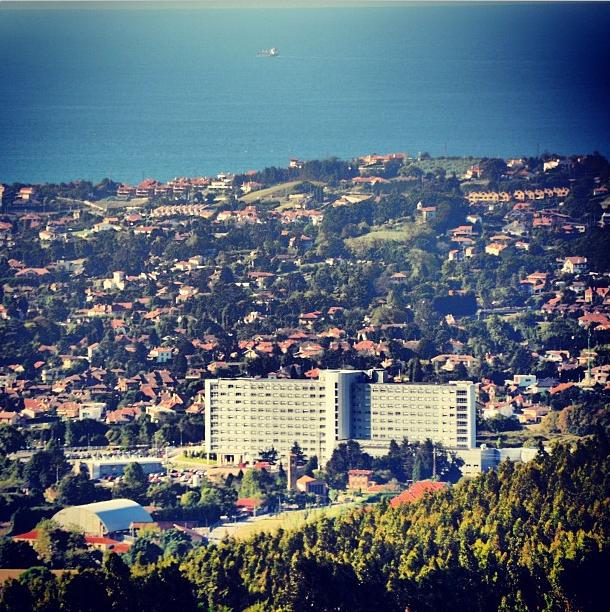Periurban on:
[Wikipedia]
[Google]
[Amazon]


 Peri-urbanisation relates to the processes of scattered and dispersive urban growth that create hybrid
Peri-urbanisation relates to the processes of scattered and dispersive urban growth that create hybrid
Anne Lambert 2011: The (mis)measurement of periurbanization. In: Metropolitics, 11 May 2011. URL: ''http://www.metropolitiques.eu''
{{Authority control Urbanization Urban geography


 Peri-urbanisation relates to the processes of scattered and dispersive urban growth that create hybrid
Peri-urbanisation relates to the processes of scattered and dispersive urban growth that create hybrid landscape
A landscape is the visible features of an area of land, its landforms, and how they integrate with natural or man-made features, often considered in terms of their aesthetic appeal.''New Oxford American Dictionary''. A landscape includes the ...
s of fragmented and mixed urban and rural characteristics.
Origin
The expression originates from theFrench
French (french: français(e), link=no) may refer to:
* Something of, from, or related to France
** French language, which originated in France, and its various dialects and accents
** French people, a nation and ethnic group identified with Franc ...
word ' ("peri-urban" meaning "around urban"), which is used by the INSEE (the French statistics agency) to describe spaces—between the city and the countryside—that are shaped by the fragmented urbanisation of former rural areas in the urban fringe, both in a qualitative (e.g. diffusion of urban lifestyle) and in a quantitative (e.g. new residential zones) sense. It is frequently seen as a result of post-modernity. In science, the term was used initially in France and Switzerland
). Swiss law does not designate a ''capital'' as such, but the federal parliament and government are installed in Bern, while other federal institutions, such as the federal courts, are in other cities (Bellinzona, Lausanne, Luzern, Neuchâtel ...
.
Structure and function
Peri-urban areas (also called ''rurban space'', ''outskirts'' or the ''hinterland'') are defined by the structure resulting from the process of peri-urbanisation. It can be described as the ''landscape interface between town and country''side, or also as the ''rural—urban transition zone'' where urban and rural uses and functions mix and often clash. It can thus be viewed as a new landscape type in its own right, one forged from an interaction of urban and rural land use. Its definition shifts depending on the global location, but typically in Europe where suburban areas are intensively managed to prevent urban sprawl and protect agricultural land, the urban fringe will be characterised by certain land uses which have either purposely moved away from the urban area, or require much larger tracts of land. As examples: * Roads, especially motorways and bypasses * Waste transfer stations, recycling facilities and landfill sites * Park and ride sites * Airports * Largehospital
A hospital is a health care institution providing patient treatment with specialized health science and auxiliary healthcare staff and medical equipment. The best-known type of hospital is the general hospital, which typically has an emerge ...
s
* Power, water and sewerage facilities
* Factories
* Large out-of-town shopping facilities, e.g. large supermarkets
* High-density residential buildings
Despite these urban uses, the fringe remains largely open with the majority of the land for agricultural, woodland or other rural uses. However, the quality of living of the countryside around urban areas tends to be low with severance between areas of open land and badly maintained woodlands and hedgerows with the scattered urban facilities.
Apart from the structural definition dominating English-speaking literature, the concept is sometimes used to fill the gap between suburbanisation
Suburbanization is a population shift from central urban areas into suburbs, resulting in the formation of (sub)urban sprawl. As a consequence of the movement of households and businesses out of the city centers, low-density, peripheral urb ...
and exurbanisation, and thus relates moreover to the movement of people in space. In this case however, peri-urbanisation is seen as the expansion of functional rural-urban linkages such as by commuting.
See also
* Peri-urban agriculture * Peri Urban Regions Platform Europe * Desakota * Urban village * FEDENATUR - European Association of Periurban Parks * Urban sprawl * Urban vitality *Rural–urban fringe
The rural–urban fringe, also known as the outskirts, rurban, peri-urban or the urban hinterland, can be described as the "landscape interface between town and country", or also as the transition zone where urban and rural uses mix and often ...
References
Further reading
* *Anne Lambert 2011: The (mis)measurement of periurbanization. In: Metropolitics, 11 May 2011. URL: ''http://www.metropolitiques.eu''
{{Authority control Urbanization Urban geography